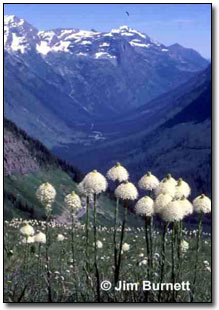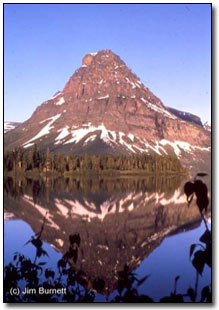|
Some of the premier locations for outdoor photography in the U.S. are located in
areas administered by the National Park Service (NPS.) There are over 380 such
sites, including not only national parks, but also monuments, recreation areas,
seashores, and a host of other designations. Perhaps you're considering taking some
photos in one of those areas that you later hope to sell. Does that make you a
"commercial photographer," subject to any special requirements?
During my 30-year career as a NPS ranger I found that there was sometimes confusion
by photographers, and occasionally staff members, about when a permit is required for
 photography. There are minor differences in rules in some parks, so the best advice
is always to ask at the local area if you have any doubts. However, the following
general guidelines for still photography (as opposed to commercial video or "motion
pictures") should help unravel some of the mystery. Here's a summary from several
NPS websites:
photography. There are minor differences in rules in some parks, so the best advice
is always to ask at the local area if you have any doubts. However, the following
general guidelines for still photography (as opposed to commercial video or "motion
pictures") should help unravel some of the mystery. Here's a summary from several
NPS websites:
"The NPS does not require a permit for still photographers, commercial or
non-commercial, when going [anywhere] or doing anything that members of the visiting
public are generally allowed to go or do without a permit." In other words, as long
as you're doing the same things as other visitors to the area, and don't break any
of the usual rules, you shouldn't need a permit.
A permit is required if your photographic activities involve any of the following:
Taking photographs that involve product or service advertisement or the use of
models, set dressings, props or equipment too large to be hand-carried;
the potential for damage to park resources or significant disruption of
normal visitor use;
entry into areas not open to the public or before or after normal
visitation hours.
Those seem pretty straightforward. As examples, don't ask everyone else to move out
 of the way so you can get your shot, or bypass a closed gate, fence, or "area
closed" sign. By all means, don't cut off a tree limb for an unobstructed view or
otherwise alter the natural setting. Some locations require everyone to stay on a
boardwalk or trail to protect fragile natural resources, so avoid the temptation to
stray out of bounds in such areas. If it's obvious that you're shooting an ad for
commercial purposes, plan to get a permit.
of the way so you can get your shot, or bypass a closed gate, fence, or "area
closed" sign. By all means, don't cut off a tree limb for an unobstructed view or
otherwise alter the natural setting. Some locations require everyone to stay on a
boardwalk or trail to protect fragile natural resources, so avoid the temptation to
stray out of bounds in such areas. If it's obvious that you're shooting an ad for
commercial purposes, plan to get a permit.
A special point about wildlife photography: there can be a real temptation to get
too close to animals or birds in search of that once-in-a-lifetime image. Not only
is this potentially dangerous to you and disruptive of the wildlife, it can also be
against the law.
As an example, the number of injuries to visitors from bison, bears and other large
mammals has prompted Yellowstone to enact specific regulations about how far you
must stay from wildlife. Again, check when you arrive in any park for local
guidelines and safety information. If wildlife photos are your thing, be properly
equipped with adequate long lenses and lots of patience.
A good source of official information is the NPS website: https://www.nps.gov . From
that page, you can go to the websites for each individual park and find contact
information for that area. You can also do a search for terms such as "commercial
photography."
If you suspect you'll need a permit, contact the individual park headquarters well
in advance of your visit. The permitting process can sometimes be lengthy and most
park staffs are heavily overworked, so don't put yourself or the employees in a
difficult situation with a last-minute request.
In short, if you look and act like any other visitor as you take your photos, you
should be just fine. Well, on second thought, try to behave more responsibly than
many tourists and you'll not only simplify your life, you'll also have a safer and
more enjoyable visit!
"Veteran park ranger Jim Burnett is the author of Hey Ranger! True Tales of Humor
and Misadventure from America's National Parks. The book takes a fun and informative
look at the lighter side of outdoor mishaps and at life as a ranger, and also
provides some practical tips for safe trips to the Great Outdoors."
| 
